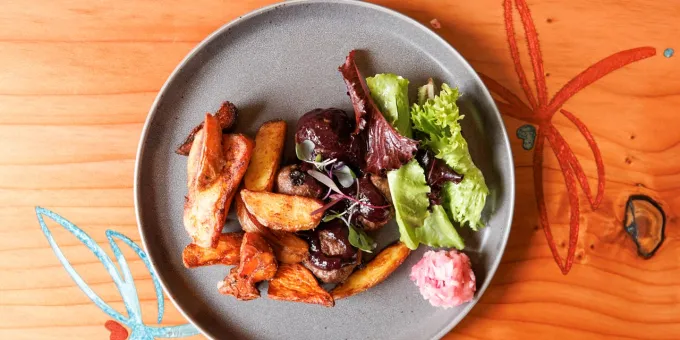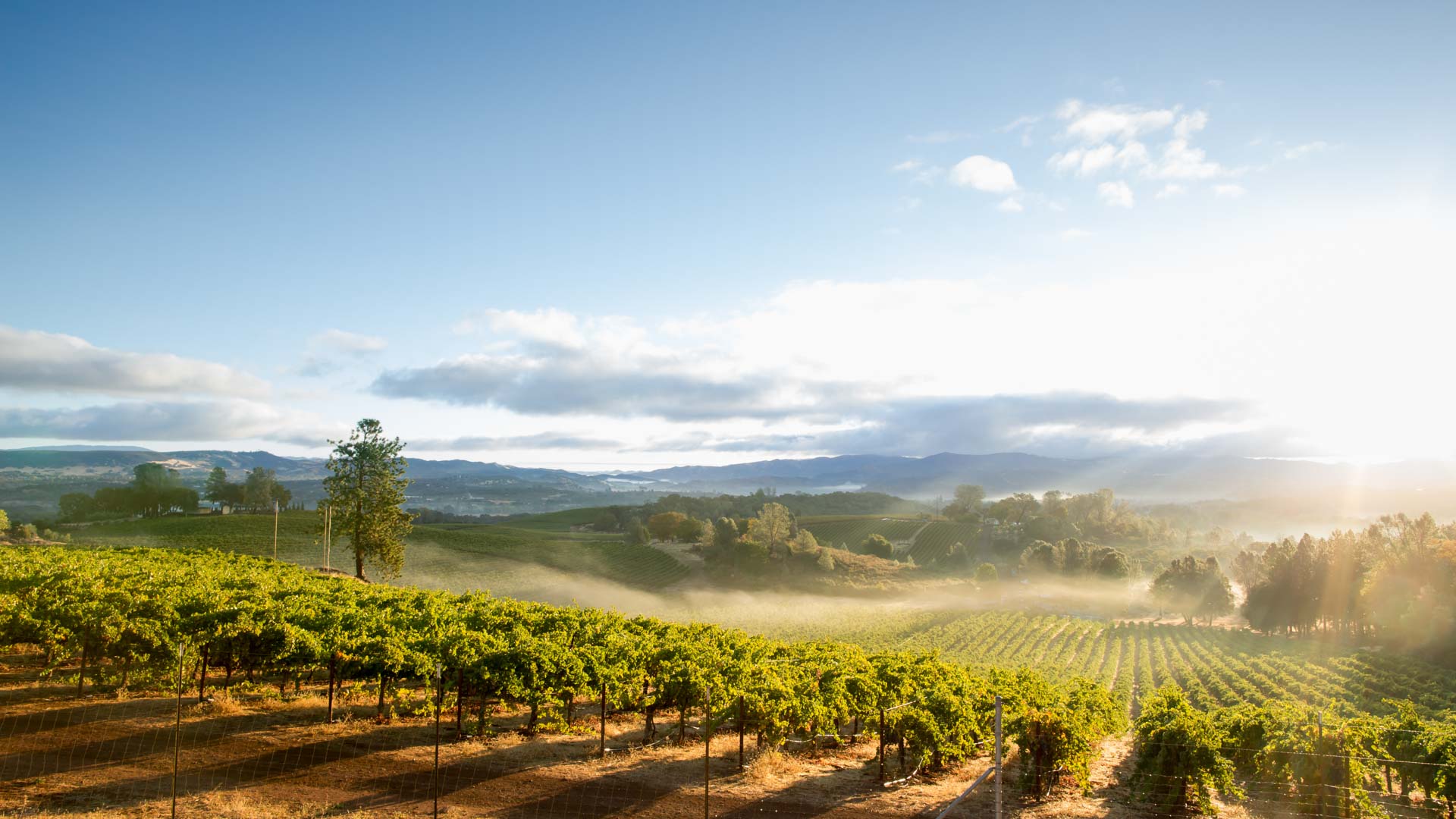The most broadly nourishing stop on any Oakland eating tour is undoubtedly Wahpepah’s Kitchen, a light-filled sanctuary devoted to Native American cooking. Conveniently located just steps from Oakland’s Fruitvale BART station, Wahpepah’s Kitchen does quite a lot with its compact menu, showcasing many ingredients sourced from local suppliers. As for its cuisine, Wahpepah’s Kitchen serves a range of dishes associated with numerous geographically distinct Native nations whose histories all share violent colonization and the forced displacement that ensued.
For Oakland-born owner-chef Crystal Wahpepah, the appetizers and entrees at her colorfully muraled restaurant—meditative Native drumming and chanting can be heard in the background—have to be good enough to compete with the city’s best-loved barbecue joints and hottest new cafes.
“It has to taste amazing,” Wahpepah says of dishes such as charred-and-marinated deer-meat sticks dipped in chokecherry sauce, blue-corn tacos covered in rare varieties of smoked Lakota and Cherokee squash, and bison-based Kickapoo chili, which is served with blue cornbread topped with maple cream.
For the record, these examples more than hold their own against the competition, but for Wahpepah and the Native producers who supply her kitchen, Indigenous cuisines are obliged to go one step further: When properly grown, raised, and sourced, Native food should not only be “good” to eat in the flavorful sense of the word but also good for you, healing medicine for the body and soul.
“Our foods are sacred,” Wahpepah says. “Some Native foods have been around for a long time, some haven’t because of historical trauma and colonization. So the restaurant is about making these foods our own again.”
As a restaurant serving Indigenous cooking, the staff at Wahpepah’s Kitchen is diverse, pretty much by definition. Because of her family’s roots in Oklahoma—she summered there as a child—Wahpepah, who was raised and now works on Ohlone land, is a member of the Kickapoo Nation. Her three daughters, who play important roles at the restaurant, are Northern California Pomo (“They’ve taught me a lot about working together,” Wahpepah says), while the rest of her staff’s roots grew in the soils of the Ojibwe Nation of the Great Lakes region and a dozen other locales.
The ingredients that make it onto your plate can be just as far-flung. There’s salmon caught and smoked by Seattle-residing members of the Lummi Nation, blue corn harvested and dried by members of the Ute Nation in Colorado, and acorn flour milled by members of the Fresno members of the Mono Nation. Even the cedar-smoked salt is Native. This meticulous attention to sources is a big part of Wahpepah’s commitment to reclaim the “food sovereignty” of Indigenous peoples.
Wahpepah came by her love of cooking like a lot of chefs, drawing inspiration from elder relatives. Two of her strongest influences were her Oklahoman grandmother, who first showed Wahpepah how to properly dry freshly harvested corn and prepare the aforementioned Kickapoo chili when she was just 7, and her grandfather, also from Oklahoma, who taught the inquisitive child how to prepare cuts of game meat such as rabbit and deer.
Before she opened her restaurant in late 2021, Wahpepah ran a catering business, but the Kitchen that bears her name is much better suited to her interest in working at a level that has resulted in an invitation to cook at the White House and a nomination for a James Beard Award.
“We serve people from all over the Bay Area, all over the nation,” Wahpepah says. “Most of our customers don’t know who we are, but they leave amazed. And then they come back with a friend. That’s the beautiful part.”
These days, for her own sustenance, Wahpepah finds herself returning to her grandmother’s chili or the green pumpkin-seed mole, which like the restaurant’s tacos—bison, rabbit, or squash—is served with a side of greens grown on a nearby Oakland rooftop. And while these dishes and others may have brought Wahpepah a measure of personal acclaim that’s never been her goal.
“I happen to be doing something I love,” she says. “Things like the James Beard nomination are nice, but the importance of it is that our work and what we’re doing in the community is recognized. That’s definitely the mission—to promote food sovereignty while being visible in our community, especially to youth. They are our next generation, you know.”

